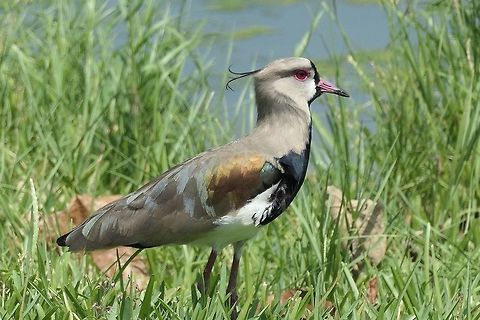
Appearance
This lapwing is the only crested wader in South America. It is 32 to 38 centimetres in length and weighs approximately 250 to 425 grams.The upperparts are mainly brownish grey, with a bronze glossing on the shoulders. The head is particularly striking; mainly grey with a black forehead and throat patch extending onto the black breast. A white border separates the black of the face from the grey of the head and crest. The rest of the underparts are white, and the eye ring, legs and most of the bill are pink. It is equipped with red bony extensions under the wings, used to intimidate foes and fight birds of prey.
During its slow flapping flight, the Southern Lapwing shows a broad white wing bar separating the grey-brown of the back and wing coverts from the black flight feathers. The rump is white and the tail black. The call is a very loud and harsh "keek-keek-keek".
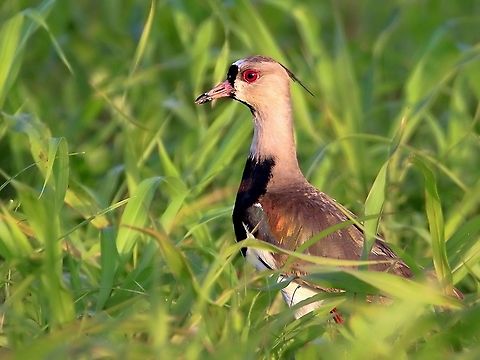
Naming
It is a popular bird in Uruguay, where it is called "tero". Due to the sound of the call the bird makes and its bold and pugnacious nature it has become the namesake and mascot of the Uruguay national rugby union team, "Los Teros". In Brazil it is widely known as "quero-quero", an onomatopoetic of its commonly heard voice, and is considered the official symbol-bird of the sate of Rio Grande do Sul.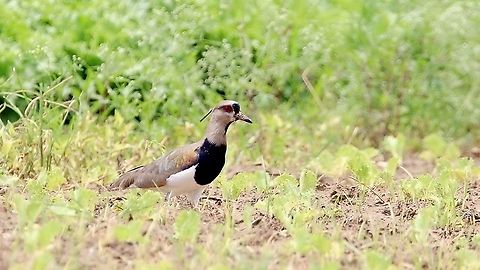
Habitat
This is a lapwing of lake and river banks or open grassland. It has benefited from the extension of the latter habitat through widespread cattle ranching. It was first recorded on Trinidad in 1961 and Tobago in 1974, and has rapidly increased on both islands. Tends to appear in any area where there are grass spreads, even in urban areas: in Rio de Janeiro, it can be seem even at soccer fields. When nesting in the vicinity of airports, poses a threat to the safety of aerial traffic.When not breeding, this bird disperses into wetlands and seasonally flooded tropical grassland.
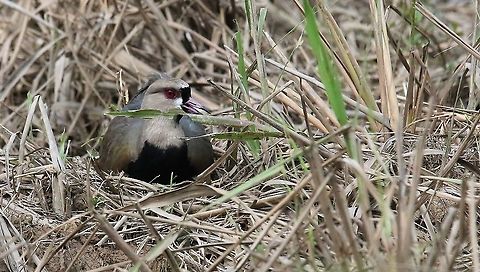
Reproduction
The Southern Lapwing breeds on grassland and sometimes ploughed fields, and has an aerobatic flapping display flight. It lays 2-3 olive brown eggs in a bare ground scrape. The nest and young are defended noisily and aggressively against all intruders, by means of threats, vocalizations and low flights.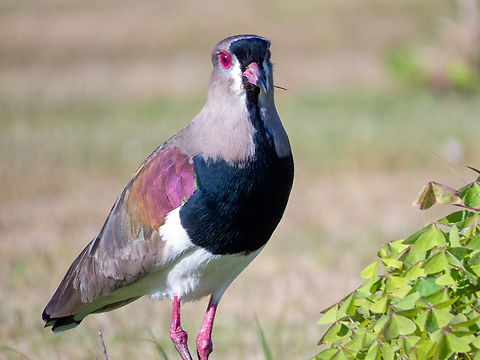
Food
Its food is mainly insects and other small invertebrates, hunted by a run-and-wait technique, mainly at night. This gregarious species often feeds in flocks.References:
Some text fragments are auto parsed from Wikipedia.